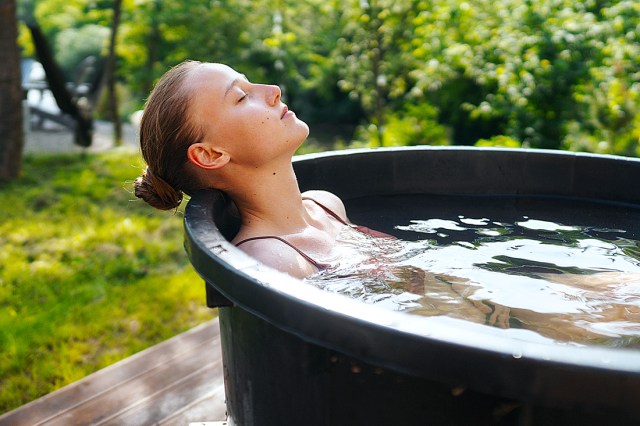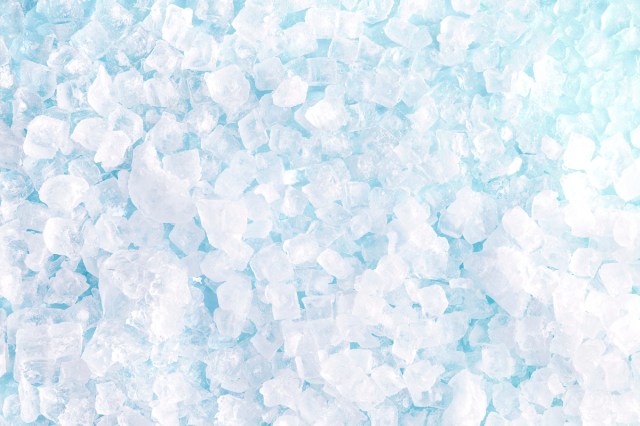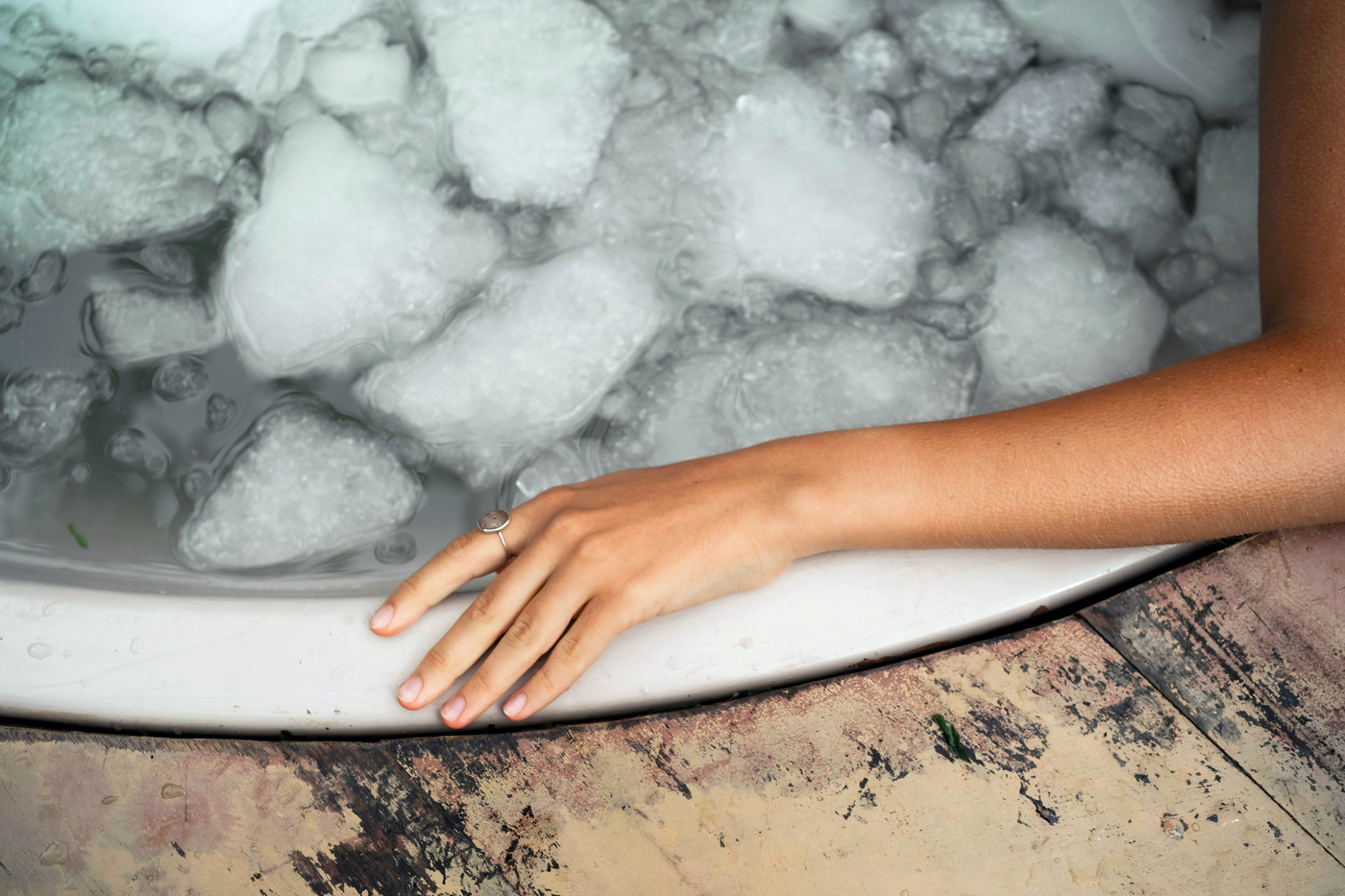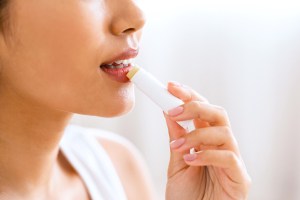How does the idea of submerging your body in freezing cold water sound to you? Though it may seem strange, that's essentially one of the hottest trends in wellness right now. Sometimes called an ice bath or a cold plunge, it involves dunking one’s body in frigid water (typically around 50 to 60 degrees Fahrenheit) for around three to six minutes.
On TikTok, there are more than 106,000 posts under #coldplunge, and 149,000 under #icebath. To say it’s popular would be an understatement. Folks swear it improves your mood, reduces inflammation and muscle soreness, and calms the nervous system. But the trend isn’t for everyone. We consulted the experts to find out the benefits and risks.

Why Are People Cold Plunging?
You might be wondering why people would willingly do something that seems kind of unpleasant. According to Dr. Jonathan Leary, founder and CEO of Remedy Place, a wellness club with locations in New York and Los Angeles that offers the service, cold plunging can be beneficial for a variety of people. “[At Remedy Place,] we've witnessed how this practice positively impacts our members, including athletes, wellness enthusiasts, and those seeking a holistic approach to self-care,” he says. “Whether it's supporting muscle recovery, reducing inflammation, or enhancing overall well-being, cold plunging offers a unique avenue for individuals to optimize their health and performance.”
Dr. Leary claims the practice has a couple of primary benefits: It can help those looking for a positive mental boost, as well as those seeking “improved thermal regulation” (more on that in a bit).
“Ice baths are known to spike our dopamine levels, aka the neurotransmitter affectionately dubbed the ‘happy hormone,’” he says. But Dr. Leary believes that one of the key benefits of a cold plunge is actually more psychological than physiological: “The magic doesn’t stop at the biochemical; it’s about mastering the belief that we're in control of our bodies,” he explains. “Beyond the chemical shift happening in our brains, the sheer act of overcoming a scary challenge plays a pivotal role in taking control of our mental health, especially as we face and conquer these challenges repeatedly.”
According to Dr. Leary, cold plunging also may help people who struggle to manage their body temperatures. “The struggle with feeling perpetually too hot or too cold is real for many,” he says, adding that he takes regular ice baths and now doesn’t feel impacted by cold weather.”
Finally, some say cold plunging can be beneficial for recovery from physical activity. As explained in an article by the Cleveland Clinic, the cold water constricts your blood vessels, slowing blood flow and relieving some of the swelling or soreness that can occur after a tough workout.
All of this might sound great, but Stephen Cheung, kinesiology professor and senior research fellow at Brock University in St. Catharines, Ontario, told CBC News he's skeptical of the long-term physical benefits. “Absolutely I think cold baths can improve your mood, but I don’t think they have these other long-term kinds of physiological health benefits,” he said.
John Holash, assistant professor at the University of Calgary’s Human Performance Lab, also spoke to CBC News, and said that while there might not be a ton of evidence to back up all the supposed benefits of cold plunging, that doesn’t mean it doesn’t work. He noted, too, that the practice goes all the way back to the ancient Greeks.

Who Shouldn’t Try a Cold Plunge?
Before you put on your swimsuit and dive in, though, it’s important to make sure you don’t have any contraindications. There are a number of very common medical conditions that are incompatible with cold plunging, so you should talk to your physician before you try it. “People with cardiovascular issues, such as heart disease, hypertension (high blood pressure), or a history of heart attacks, should consult a health care professional before attempting cold plunges,” Dr. Leary says.
Cardiologist Dr. Siyab, M.D., issued a similar warning on TikTok, cautioning that the same risks of general exposure to extreme cold temperatures apply to cold plunges, too. “You have to consider the risks associated with cold exposure, like frostbite, hypothermia, abnormal heart rhythms, heart arrhythmias, and even heart attacks sometimes,” he said. There’s also the concern of something called “cold shock response,” when water under 60 degrees Fahrenheit triggers a rapid increase in breathing, heart rate, and blood pressure.
Dr. Leary also notes that those with circulation disorders, including conditions such as Raynaud’s disease, “where blood vessels constrict excessively in response to cold, can be aggravated by cold exposure,” and should skip this trend. Finally, cold plunging is not recommended for pregnant people or the elderly — the latter may have decreased “thermoregulation capabilities and a higher risk of hypothermia.”Even if you don’t have any of these conditions, you should speak to a health care professional before taking the plunge. Be sure to mention the medications you take, as some, such as beta-blockers, Leary explains, can impact the body’s response to temperature changes.

How Often Should One Cold Plunge?
If you (and your doctor) decide cold plunging is for you, the frequency with which a cold plunge might be beneficial is “based on your individual health, tolerance, and goals,” Dr. Leary says. “It's essential to listen to your body and not overdo it, especially when you're just starting out.” He also notes that it's “crucial to prioritize recovery between cold plunge sessions. Cold exposure is a stressor, and your body needs time to recover and adapt.” If you feel fatigued, sore, or have a change in sleep quality, that might be a sign to reevaluate your practice.
This article is for general informational purposes only.
Affiliate Disclaimer Medical Disclaimer














 Unique Beauty is free for all users.
Unique Beauty is free for all users.